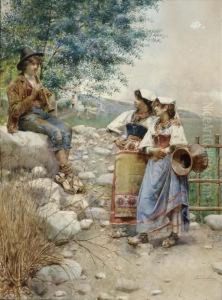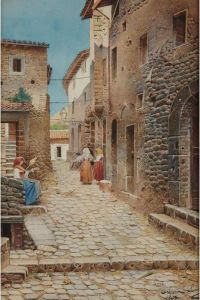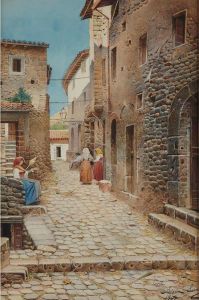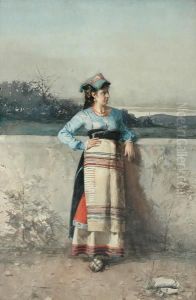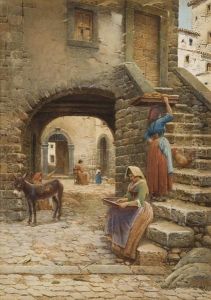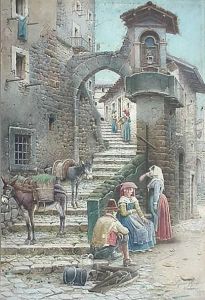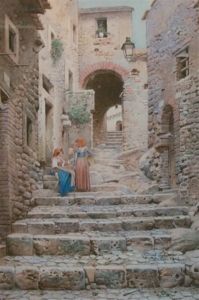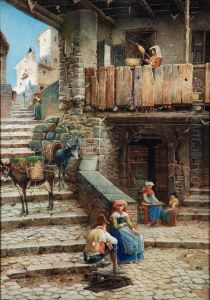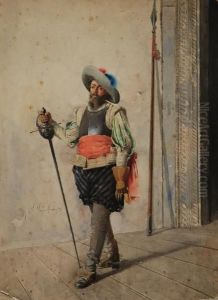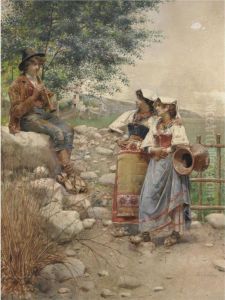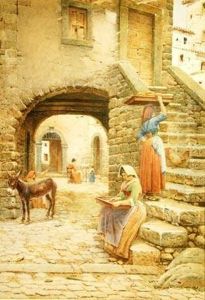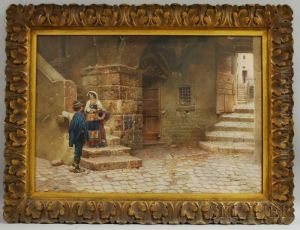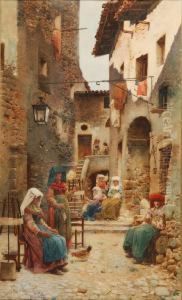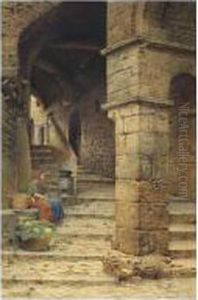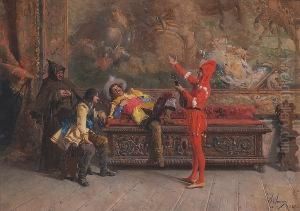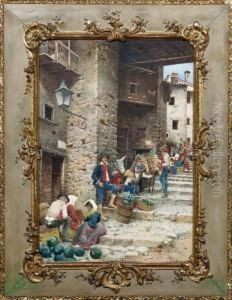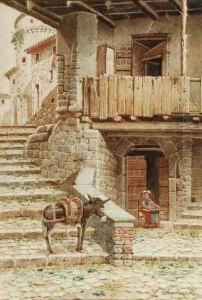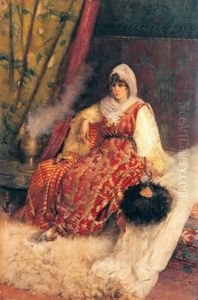Scipione Simoni Paintings
Scipione Simoni was an Italian painter who made significant contributions to the art world during the 19th and early 20th centuries. Born in Montalcino, Italy, in 1840, Simoni developed an interest in art at a young age. He pursued his passion for painting by studying at the Academy of Fine Arts in Siena, where he was influenced by the Italian Renaissance, especially the works of artists like Raphael and Michelangelo. Simoni's early works were characterized by their attention to detail, vibrant colors, and the use of light, which would become hallmarks of his style.
Throughout his career, Simoni was known for his historical and religious paintings, as well as his portraits. His ability to capture the emotional depth and complexity of his subjects won him acclaim. Simoni's works were exhibited in various Italian cities, including Florence, Venice, and Rome, and he received numerous commissions from churches and private collectors.
In addition to his paintings, Simoni was also involved in the decoration of public buildings and churches, contributing frescoes that displayed his mastery of large-scale compositions and his understanding of religious themes. His work in fresco painting helped to revive interest in this art form in Italy during a time when it was in decline.
Despite his success, Simoni remained dedicated to his artistic development, continually experimenting with new techniques and subjects. He was an influential figure among his contemporaries, inspiring younger artists with his commitment to the craft of painting and his ability to convey profound human emotions through his art.
Scipione Simoni passed away in 1922, leaving behind a legacy that has continued to be celebrated in the art world. His contributions to Italian art have been recognized in various retrospectives and exhibitions, and his works are held in numerous museums and private collections around the world.
